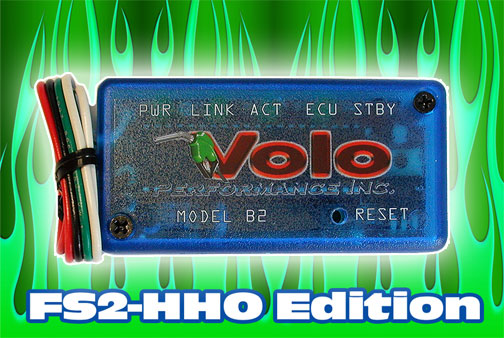
The idea of fuel vaporizers has been around for many years, since about 1900. There had to be a way to get a fuel vapor and air mix into place, for combustion, in the converted steam engines. There were no carburetors yet. Spark plugs were not there either. There are over 650 versions of fuel vaporizers on the books. Some help the fuel delivery systems on engines and others completely replace those devices. There are a lot of ways around the block for fueling engines.
This fuel vaporizer is currently formatted to help out fuel injection and carbureted engines by adding in heat vaporized fuel and water. Fuel is siphoned through a needle valve from an under hood tank. There in the fuel vaporizer it is mixed with air and crankcase vapors. These crankcase vapors and air come into the vaporizer from the 3/8” hose that is attached to the PCV valve of the engine’s valve cover (or similar connection). (Note: The factory hose connection between the PCV and the intake manifold is first removed to install the vaporizer.) The vaporizer’s other 3/8” hose is connected to one end of the heat exchanger (an 8” double coil of 3/8” aluminum tubing) which is attached to or near the exhaust manifold. The other end of the heat exchanger is attached to a hose connected to the intake manifold where the PCV formerly was connected.
How it works: A small amount of fuel is siphoned through the needle valve into the vaporizer by the high vacuum of the intake manifold being drawn through all the 3/8” tubing and heat exchanger. Where most of the heat is absorbed into the fuel and thereby vaporized close to the concentration of the oxygen it will combust with. What was liquid has expanded by heat from the heat exchanger and vacuum into a fairly dry thin vapor of fuel. Also, water vapor is drawn in from the under hood windshield wiper bottle. This vapor fuel is more combustible than the injected or carbureted fuel which doesn’t have as much time to heat expand into fuel vapor. What with the quicker combustion of the vapor, there is now excess fuel in the exhaust that is sensed by the oxygen sensor. The computer therefore shortens the fuel injection pulse to each fuel injector and you use less gas. With carburetors you use less throttle and so less gas.
Why you ask: Well normally a lot of fuel is injected and a small part of that is vapor during the beginning of combustion. That is because there is little dwell time during which heat is absorbed by the fuel, so as to make vapor. Remember the injector is only a few inches above the intake valve and the cold air of the intake manifold. Vaporizers apply heat over dwell time (about 4 feet of tubing and 3 and a ½ feet of heat exchanger). Therefore a little fuel is turned into a lot vapor. Try it.
“Therein lies the rub.” Car makers could easily do this, but they make their profits on cars. Oil companies, on the other hand, sell a lot of fuel.
Combustion is actually oxidation of hydrocarbon molecules. Oxygen is very sparse compared to injected fuel. You ideally would have just the necessary amount of fuel mixed with the oxygen of the air
going into each cylinder. That’s not the case. Fuel injectors are usually just a few inches above the intake valves. They are timed solenoid controlled valves that spray stronger that a garden pump sprayer. On average modern fuel injection adds over eight times the amount of gasoline required to push a piston through its combustion stroke. That is all you want the gas in your car to accomplish. About all 87% of the gas you buy does is produce heat. Lots of heat. Catalytic converters run at 1600 degrees Fahrenheit with a 60 mph wind blowing over them. Once the pistons are mostly through their stroke there is a burning cloud of hydrocarbon gasses which are exhausted out the manifold. Then into the catalytic converter, which is there to promote increased and complete combustion outside the engine? If combustion of hydrocarbons were completed during the power stroke the exhaust manifold would run at 270 degrees Fahrenheit approximately, instead of 375 degrees Fahrenheit and higher.
If the right amount of gas were used it would be a very thin dry vapor like air. Easy proof of that is the old trick of starting the old carbureted cars by sprinkling an ounce of gas down the carb. It wasn’t carbureted, but the engine started easily. It was the vapors coming off that small amount of gas that combusted, not liquid fuel. Liquid fuel doesn’t burn, it is the vapors coming off which are free to combine with oxygen. This oxidation yields CO2 and H2O. Power the car, don’t try to heat the earth
Buddy’s Inventions® May 22, 2013.

Will the ScanGaugeII work on my vehicle?
Will the ScanGaugeII be able to clear my trouble codes and
turn off my "Check Engine" light?

VOLO FS2-HHO-Edition Still ONLY $89.95!
Works on 1996 to 2012 cars and trucks. Comes with
every HHO kit sold at Hydrogen Garage.

WHERE YOU CAN BUY KOH & NAOH
(electrolyte) for the BEST DEAL!

Download Adobe Acrobat Reader for FREE!
(.pdf file reader)
About / Awareness / Education / HG store / Terms of HG
Contact / Links / Sponsor
Hydrogen Garage LLC • California • USA




![]()








